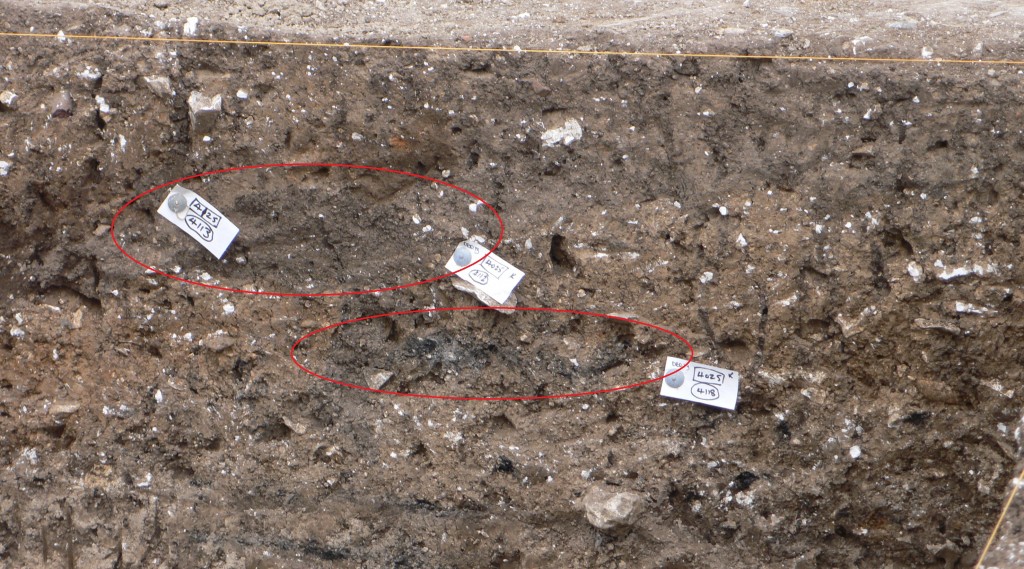Wednesday 26th June 2013
Day 21- A House is not a Home
Many of the features interpreted as house platforms or house terraces have had surprising results once excavation was undertaken. For example at the top North-West corner of the site, a previously thought to be house platform had too steep sides in one section and a spread of flint rubble to be so. Once the other sections were excavated, a rectangular structure constructed from flint was identifiable and the rubble spread opposite it was thought to be where the demolished structure was deposited. Once the whole feature was cleaned up, this hypothesis was strengthened and the shape of the structure may possibly be a grain or corn dryer!

Almost all of the feature has been cleaned back by students Michael Owens, Jack Powell and Niomi Edwards. Courtesy of Bournemouth University.
A different interpretation has also happened at a previously interpreted house terrace further down the site. Once the sections were taken out by students Aimee Bates, Craig Pitches and Bertram Beanland, it became clear that the sloping sides and two clearly defined burnt layers were not indicative of a house terrace or platform. Instead area supervisor and Bournemouth University lecturer Harry Manley concluded the shape was indicative of a pond barrow and the burnt areas where a burial may be within the other half of the section. However a pond barrow is from the Bronze Age period and most of the datable evidence recovered from the feature belongs to the Late Iron Age and Roman periods.
